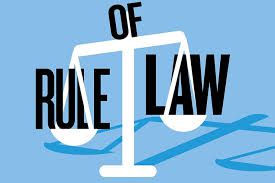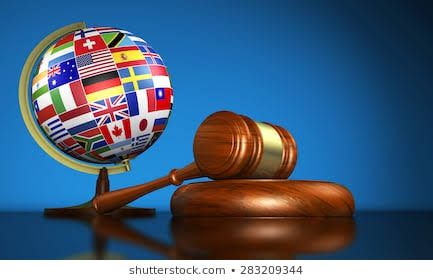Glimpse Of Strict Liability And Its Influence On Society
In the context of tort law, strict liability refers to a legal principle that
holds an individual or organization accountable for their actions or products,
regardless of negligence or intention.1 This implies that a plaintiff may seek
compensation for damages or injuries in strict liability proceedings without
having to demonstrate the defendant's carelessness or fault. Strict liability is
frequently used in situations involving dangerous animals, unsafe activities, or
faulty items because the potential risks are so high that whoever is in the
position to manage them is held culpable for any damage they produce.
Negative Aspects:
Conclusion
These concept of Strict liability, which have been used in several circumstances to Mould India's legal system, have their origins in the famous Rylands v. Fletcher case.
While strict liability works to safeguard public safety, advance environmental preservation, and give victims access to justice, it also has drawbacks that could increase costs for businesses, hinder innovation, restrict economic growth, and serve as a magnet for lawsuits. Strict liability has a good effect since it helps to ensure product safety and promotes ethical behavior in high- risk sectors.
Products liability, ultra-hazardous activities, and animal attack cases are three frequent examples of strict liability torts. The legal system in India is based on the concepts of justice and responsibility, and each kind is essential in guaranteeing accountability in circumstances when there is a significant risk of damage to customers or to other people in society. Therefore, strict liability is crucial to give victims access to justice when they need it most.
Essentials Of Strict Liability:
The Rylands v. Fletcher landmark ruling, which provided the framework for the application of this concept, is principally responsible for establishing the concept of strict liability in tort law's association with India. The principle of strict responsibility as it is recognized in India revolves around the ruling made in this case and how Indian courts subsequently interpreted it.- Dangerous Product:
Dangerous product is a key component of Indian strict liability. The plaintiff must have been harmed as a direct result of the dangerous thing's escape. In other words, there must be a definite connection proving that the defendant's activities led directly to the plaintiff's harm.
For instance, if a big concrete slab or rusty wire falls from a building site onto a neighboring property and damages a house, it establishes accountability as there is direct connection between the construction company's operations and the harm produced to the harm.
- Escape Of The Dangerous Thing:
The escape of a harmful object is the utmost crucial component of strict Liability in India. The defendant must have brought something harmful on their property or brought something dangerous on its land. The plaintiff or the plaintiff's property may be harmed if this hazardous substance were to escape from the defendant's property. This component is essential to proving the defendant's responsibility.
Think about a factory owner, for instance, who keeps dangerous chemicals on their property. The escape of the hazardous chemicals becomes a crucial element in determining culpability if they leave the manufacturing property and contaminate a nearby farm, harming the crops, cattle, or the soil he will be liable under strict liability.
Whereas, in the case of Read v. Lyons & Co. where the appellant worked at the factory of the defendant. She suffered injuries while working in the production facility when a shell exploded, and as a result she sued her employer. According to the court, even if the shell contained dangerous chemicals, there was no "escape," hence the defendant was not held liable.
- Non-Natural Use Of Land:
The defendant in this case must have used their land in an unnatural and abnormal way. In other words, the defendant's actions must go beyond what a reasonable person would judge to be common or ordinary. This factor is essential for separating situations in which strict responsibility is applicable from those in which it is not.
An example of a non-natural use of land would be if a landowner built a dam on their property and it collapsed, flooding downstream regions and inflicting damage. However, it could not be considered a non-natural use if the landowner is involved in an activity that is accepted for the area, like farming, and there is an irrigation system malfunction that causes damage.
In Sochacki v. Sas, the court ruled that since using fire within the home is a necessary element of daily living, it would not be viewed as a non-natural use of the property.
The Supreme Court of India extended the principle in Rylands v. Fletcher to dangerous companies in M.C. Mehta v. Union of India (1987). The court highlighted that businesses engaged in activities that are intrinsically harmful are severely accountable for any harm done to the neighbourhood as a result of their unnatural and possibly hazardous use of the property.
Exception Under Strict Liability:
- Contributory Negligence:
In strict liability situations, the legal principle of contributory negligence may be important, especially when determining how much compensation a plaintiff would receive. Whether the plaintiff's own carelessness or failure to use reasonable care contributed to their injuries or losses must be determined. If contributory negligence is shown, the damages awarded to the plaintiff may be reduced or, in certain cases, recovery may be prohibited. If the harmful product escaped because of the appellant, that might be a strong defense.
In the case of Eastern & South African Telegraph Co. Ltd. V. Cape town tramways Co. Electric current flowing from the defendant's tramways disrupted the plaintiff's underwater cable transmissions. Since such damage wouldn't occur to someone going about their ordinary enterprise, it was ruled that the damage was caused by the plaintiff's equipment's exceptionally high sensitivity. As a result, the defendant was not held liable for the escape.
- Act Of God/ Vis Major:
A legal concept known as "Act of God" may be used as a defence in some circumstances, including strict liability proceedings. It describes unusual and unforeseen natural occurrences or calamities that are uncontrollable by humans and for which no one is liable. When an Act of God defence is properly proven, a defendant may be released from responsibility for any harm or losses brought on by such occurrences. However, depending on the jurisdiction and the particular facts of the case, this defense may not be available or applicable.
For instance, assume a situation where a chemical production facility is next to a river. The company takes all essential procedures to avoid leaks and spills while securely and legally storing dangerous chemicals. The river overflows, the floodwaters overcome the plant's containment mechanisms, and a considerable amount of dangerous chemicals are released into the neighbourhood as a result of the unprecedented and record-breaking rainfall.
The chemical discharge causes economic losses, property damage, and health problems for a number of surrounding households and companies. They file a strict liability case against the chemical production facility, arguing that the facility is solely responsible for the damage the released chemicals caused. In this scenario company can put the defense of "Act of God".
- Consent Of The Plaintiff:
If the plaintiff has granted express or implied permission to the presence of a source of damages and there was no negligence on the part of the defendant, the defendant will not be held liable. Essentially, it is the defendant's "Volenti non fit injuria" argument as adopted by the court.
Imagine that a landowner invites the neighborhood to fireworks show that will take place on their property. During the show, there is a malfunction that leads to an explosion that hurts spectators and damages nearby houses. The absence of the Neighbours' agreement might be used as a defense to strict responsibility claims if the landowner can show that they voluntarily and consciously agreed to watch the fireworks display while realizing the hazards involved. The lack of permission in this case suggests that the Neighbours were willing to take the danger of the fireworks show.
In Peters v. Prince of Wales Theatre Ltd., Birmingham, the plaintiff agreed to rent a shop from the defendant, who also owned a theatre and a rehearsal room connected to the same property. The theatre was equipped with a water storage system in case of an emergency. Too much frost caused the water container to break, which allowed water to flow into the plaintiff's business and destroy his items.
In this case, the court found that the defendant was not liable since the plaintiff had implicitly accepted the hazards of a water storage tank that was adjacent to his business by taking the defendant's premises on rent.
- Act Of Stranger:
- The "act of a stranger" defense often focuses on the notion that the defendant had no influence over and could not reasonably predict the third party's behavior.
- It is crucial for the defendant to show that they took adequate measures, and that the stranger's action was an unforeseen intervening incident that broke the chain of causality.
- The court will frequently consider the facts and circumstances to decide whether the defendant should be held accountable for the damage caused by the third party's actions. The applicability of the "act of a stranger" defense can vary depending on the specific circumstances of the case and the jurisdiction's laws.
- Statutory Authority:
An act that was carried out with governmental approval is a defense to a tort action. The defense is also acceptable where the action is subject to the Strict Liability rule. However, when there is carelessness, statutory power cannot be invoked as an excuse.
Impact Of Strict Liablity
Positive Aspect:-
Environmental Protection:A significant instrument for environmental preservation is strict liability. Companies are encouraged to engage in pollution control and preventive measures to avoid liability since it holds polluters liable for any environmental harm resulting from their operations as pollution affects people living near the industrial area.
-
Public Safety:
Strict liability in industries like nuclear energy, public infrastructure, and the transfer of hazardous commodities helps to guarantee that safety procedures are strictly implemented. As accidents can result in severe penalties and financial loss for operators of high-risk facilities, it encourages them to maintain the greatest levels of safety.
-
Doors For Justice:
Without regard to the defendant's intention or carelessness, strict liability assures that victims of injury are entitled to a legal remedy. This encourages justice and responsibility, especially in situations when it may be challenging to establish carelessness or culpability. When a victim needs compensation, it lets them quickly get it.
- Product Safety: By compelling businesses to create and distribute goods that adhere to safety requirements, strict responsibility promotes product safety. This pushes businesses to conduct stringent quality control, testing, and risk assessment, ultimately resulting in a decrease in the quantity of hazardous or poor items in the market.
Negative Aspects:
- Cost: Strict liability could raise business expenses, which might then be passed on to customers as increased pricing for goods and services. The general public's access to affordable goods and services may be impacted by this. To comply with high liability regulations, businesses frequently must make additional compliance investments, which may be expensive and time-consuming administratively. Small enterprises may be significantly impacted by this.
- Killing Innovations: Since there have been several instances in which courts have held industry accountable, businesses may be discouraged from creating new or hazardous goods, even if they potentially have huge social advantages. This may prevent progress and inhibit technological innovation.
- Limiting Economic Growth: The cost of conducting business might go up due to stricter liability, which might slow down economic growth and cut down on job prospects. Industries that are inherently riskier might encounter unique difficulties.
- Attract Lawsuits: As the burden of proof frequently moves to the defendant in strict liability cases, this can occasionally result in an increase in litigation. As a result, the legal system can become clogged with baseless claims.
Types Of Strict Liability
The three most popular types of strict liability torts are as follows:- Product Liability:
Even if they took all reasonable measures and did not commit negligence, strict product responsibility holds makers, distributors, and dealers of products accountable for any injuries or losses brought on by a harmful or faulty product. This kind of strict responsibility is frequently used in situations involving faulty items, such as consumer goods, medicines, and medical equipment. The plaintiff in a product liability case must establish that the product is flawed.
- Ultrahazardous Activities:
There are some activities that are seen to be so hazardous by nature that anybody engaged in them is strictly accountable for any injury that occurs. An action that is uncommon and has a foreseeable and considerable risk of harm, even with due caution, is said to as uncommonly hazardous. Blasting, the use of explosives, and specific forms of building activity are included in this.
- Animal Attack:
Wild animal owners may be held fully accountable for any damage their animal causes. The plaintiff must typically prove to the court that the animal injured them, that the animal belonged to the defendant, and that the plaintiff did not provoke the animal. This includes species like lions, tigers, and bears that are not generally domesticated.
Conclusion
These concept of Strict liability, which have been used in several circumstances to Mould India's legal system, have their origins in the famous Rylands v. Fletcher case.
While strict liability works to safeguard public safety, advance environmental preservation, and give victims access to justice, it also has drawbacks that could increase costs for businesses, hinder innovation, restrict economic growth, and serve as a magnet for lawsuits. Strict liability has a good effect since it helps to ensure product safety and promotes ethical behavior in high- risk sectors.
Products liability, ultra-hazardous activities, and animal attack cases are three frequent examples of strict liability torts. The legal system in India is based on the concepts of justice and responsibility, and each kind is essential in guaranteeing accountability in circumstances when there is a significant risk of damage to customers or to other people in society. Therefore, strict liability is crucial to give victims access to justice when they need it most.
Law Article in India
Legal Question & Answers
Lawyers in India - Search By City
LawArticles
How To File For Mutual Divorce In Delhi

How To File For Mutual Divorce In Delhi Mutual Consent Divorce is the Simplest Way to Obtain a D...
Increased Age For Girls Marriage

It is hoped that the Prohibition of Child Marriage (Amendment) Bill, 2021, which intends to inc...
Facade of Social Media

One may very easily get absorbed in the lives of others as one scrolls through a Facebook news ...
Section 482 CrPc - Quashing Of FIR: Guid...

The Inherent power under Section 482 in The Code Of Criminal Procedure, 1973 (37th Chapter of t...
The Uniform Civil Code (UCC) in India: A...

The Uniform Civil Code (UCC) is a concept that proposes the unification of personal laws across...
Role Of Artificial Intelligence In Legal...

Artificial intelligence (AI) is revolutionizing various sectors of the economy, and the legal i...








Please Drop Your Comments